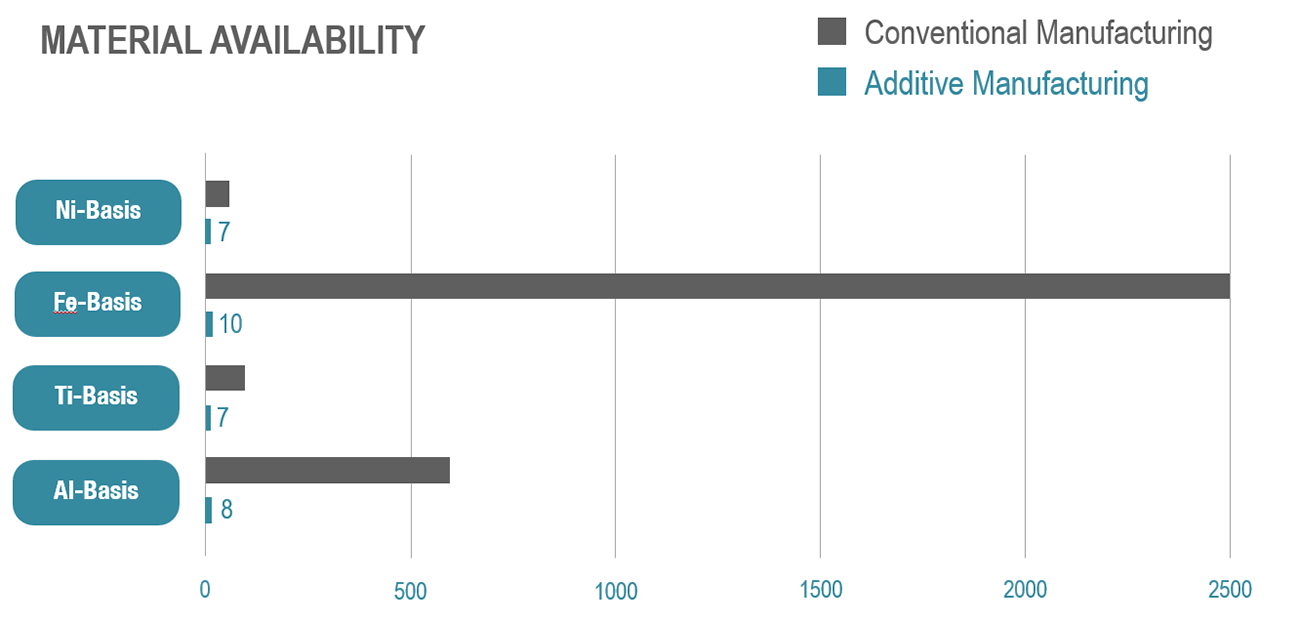Exploiting your metal Additive Manufacturing data assets: Faster industrialisation and new revenue streams
While metal Additive Manufacturing is revolutionising industries from aerospace to healthcare, the need for efficient process development and the acquisition of validated material data is becoming increasingly important. In this context, a groundbreaking solution emerges – that of the platform-based exploitation of metal AM data assets to accelerate industrialisation and unlock new revenue streams. Here, Rosswag GmbH's Philipp Schwarz and Gregor Graf delve into the significance of this concept and how it fits as a crucial piece in the AM industrialisation puzzle. [First published in Metal AM Vol. 9 No. 3, Autumn 2023 | 10 minute read | View on Issuu | Download PDF]
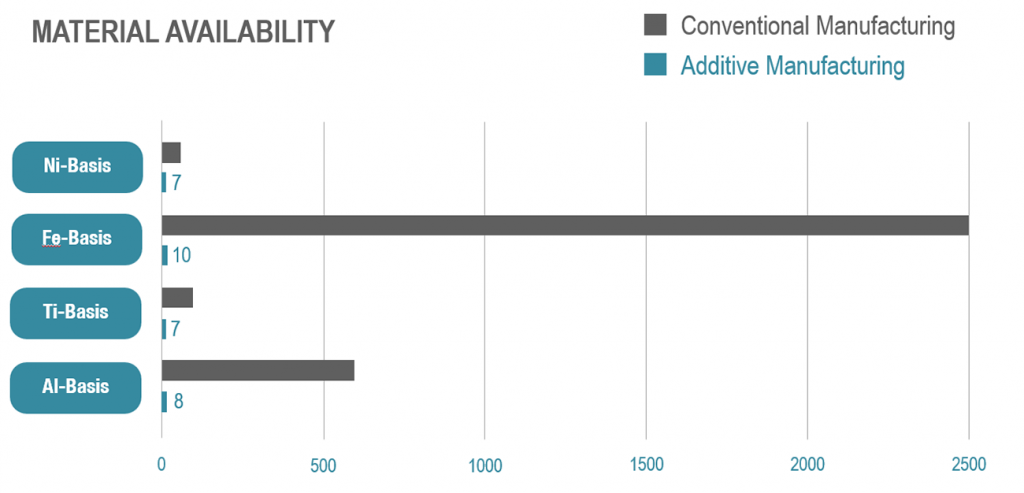
In the dynamic landscape of metal AM, the quest for optimised and rapid process development is a prevailing trend. There are currently only a few dozen materials that are qualified for industrial metal AM applications. Conventional manufacturing processes, however, have the option to choose from thousands of iron-based alloys, for example. This leads to slower AM application development, among other things, resulting in a reduced speed of industrial adoption despite the tremendous technological potential of the technology. In addition to this, we have yet to consider the development of new materials with previously unobtainable properties that can only be processed by metal Additive Manufacturing.
The complexity challenge
Laser Beam Powder Bed Fusion (PBF-LB) is currently the leading metal AM process, yet it remains complex to master. Depending on machine type, there are numerous different parameters that influence the quality, production time and cost of an additively manufactured metal part. As with all metal forming processes, complexity increases further if raw material production or complex heat treatment cycles are considered. With new developments such as beam shaping, high-temperature preheating or multi-material manufacturing, there are additional factors that contribute to a further growth of parameter complexity.
So, when there is such complexity, why should an Additive Manufacturing user even think about optimising their standard parameter sets? The simple answer is that if they don’t, they are not leveraging the full potential of their expensive hardware.
Process parameters can be optimised not only for higher productivity. There is a wide range of possibilities for application-oriented optimisation, whether parameters for thin-walled structures in heat exchangers, special downskin parameters for optimising surfaces, or the combination of different parameter sets in one component.
Normally, the implementation of all these possible optimisations largely remains on the AM user. With the growing complexity of metal Additive Manufacturing – including diverse machines, system configurations, materials, and stringent part certification demands – the number of potential parameter combinations for PBF-LB machines appears virtually limitless. Yet, the question arises: are these possibilities effectively harnessed by the average AM user or are they simply overwhelmed by the complexity?
The reality is that so many AM users have the potential to relatively easily double their output – and revenue – through parameter optimisation. But all too often, for years, only the standard parameters from the machine manufacturer are used.
Optimised and rapid process development: an emerging trend
As industries seek cost- and time-efficient methods to qualify new materials and streamline production, several approaches have emerged. Companies such as Materialise have introduced innovative tools such as the Process Tuner, facilitating the design of comprehensive parameter studies supported by simulations. Additionally, the integration of Artificial Intelligence (AI) tools by entities such as Senvol has enabled the design and analysis of parameter studies, propelling the AM industry toward quicker and more informed decision-making.
Despite the abundant opportunities for process optimisation, a significant efficiency gap persists within the metal AM industry. A common starting point is the optimisation of build rates using standard alloys like 316L or AlS10Mg, often relying on the standard parameter sets provided by AM machine OEMs. This standardised approach results in redundant efforts and a lack of progress, stifling overall industry efficiency.
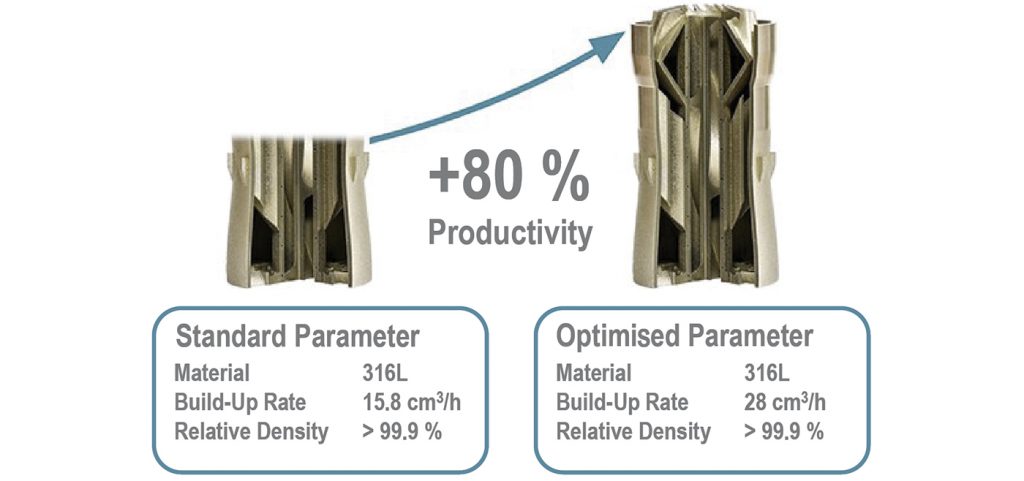
The repeating of productivity studies on standard alloys raises a pertinent query – is it truly advantageous to undertake exhaustive material qualification efforts when others in the market have already traversed the same path? The generation of material data involves substantial costs, making viable business cases challenging to establish unless catering to industries such as aerospace and medical. Even simple parameter studies with some cube and tensile specimens built and analysed can cost about €10,000. For a qualification of new parameters for more demanding series components and dynamic load cases, qualification with the large number of samples required quickly costs more than €200,000.
These costs are, of course, influenced by whether the work is done in-house, externally, or using certified test houses. The need for a more collaborative, efficient, and sustainable approach to data acquisition and optimisation in metal AM becomes evident or even essential.
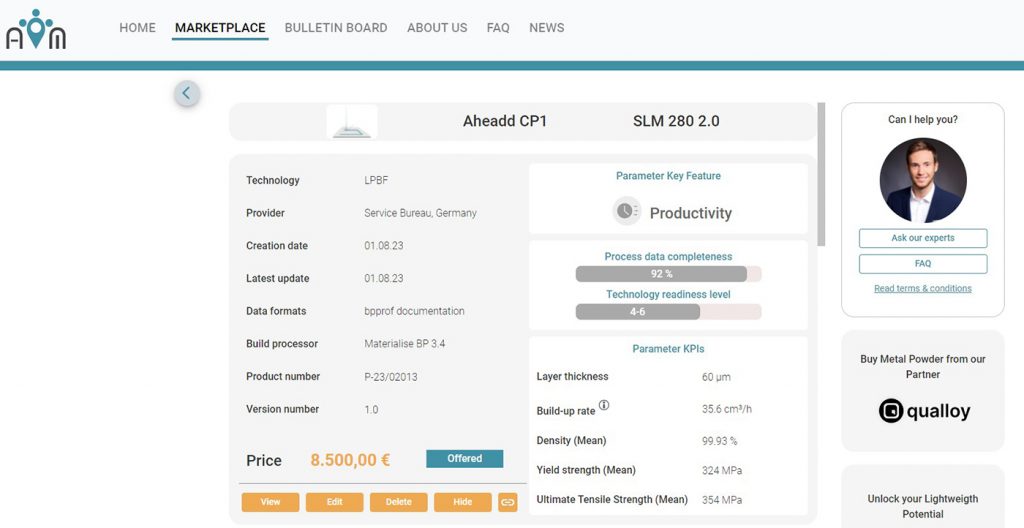
The AddiMap marketplace: transforming metal AM through data monetisation
A real innovation that holds the potential to reshape metal AM optimisation and development is the world’s first process parameter marketplace for PBF-LB: AddiMap. This platform introduces a novel approach to expedite process parameter development and material data acquisition. Companies armed with self-developed process parameters can list their parameters on AddiMap, alongside relevant material and process data. The uniqueness and quality of data influence the pricing of these parameters.
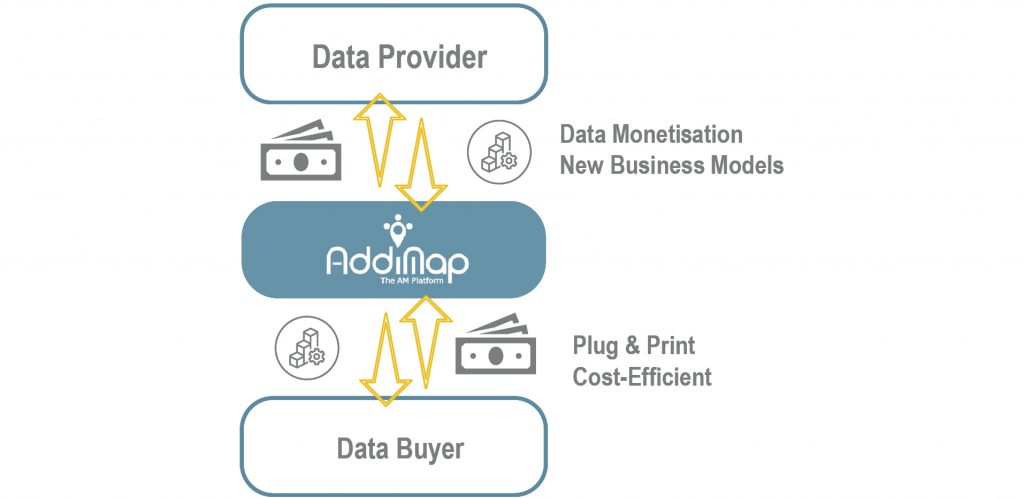
The platform’s approach raises a pertinent question – why not offer initial parameter sets with preliminary results? Particularly in the context of new materials, any data foundation serves as a valuable asset for subsequent optimisations. Enhanced data quality paves the way for data monetisation, including scenarios where certification necessitates the use of data, effectively enabling businesses to recover their investments. This novel approach transforms into an entirely new business model for experienced AM users.
Leveraging metal AM’s full potential
A noteworthy advantage of the AddiMap model is its potential to unlock previously untapped avenues for leveraging metal AM’s full potential. Companies can acquire process parameters that cater to specific needs, such as thin-walled parts or high productivity for non-critical components. This eliminates the need to invest in new machinery or extensive parameter studies for enhanced productivity. The metal AM industry, ripe for innovation and collaboration, can substantially benefit from this shift away from protectionism toward broader market growth and the exploration of exciting new applications.
In the end, a new metal AM application can be qualified much faster and cheaper than before, and the data provider is paid for its earlier development efforts. So, overall market efficiency increases, leading to faster adoption and industrialisation.
Conclusion
AddiMap cooperates with other marketplaces like www.qualloy.com in order to offer users the right metal powder for the right parameter set. Together with Autodesk, there is an effort to integrate AddiMap as a service in Fusion 360, offering users the option to directly purchase and use the appropriate parameter set during job preparation in the future.
In the relentless pursuit of AM’s industrialisation, the missing piece of the puzzle might just be the strategic exploitation of metal AM data assets. As the industry faces increasing complexities and demands, the traditional approach to process parameter development and material qualification proves inefficient. The introduction of AddiMap and its parameter marketplace concept challenges the status quo by enabling efficient data monetisation, optimising processes, and opening doors to novel revenue streams.
With this innovation, the metal AM industry takes a significant step closer to realising its full potential and becoming a driving force behind transformative industrial advancements. Collaborative partnerships are a driving force in the dynamic world of metal Additive Manufacturing. Their advantages – knowledge sharing, accelerated innovation, holistic problem-solving, resource optimisation, risk mitigation, market access, and regulatory compliance – collectively shape the metal AM industry’s growth and success.
Contact
Philipp Schwarz, M.Eng.
Business Development Manager
Rosswag GmbH
[email protected]
www.addimap.com
The power of collaborative partnerships
In the ever-evolving landscape of metal AM, collaborative partnerships are proving to be pivotal in driving innovation, overcoming challenges, and expediting the industrialisation process. Given the intricacies of AM, spanning from complex process development to material qualification, strategic collaborations offer a multifaceted approach that propels the industry’s growth.
Knowledge sharing and exchange
Collaborative partnerships facilitate the exchange of knowledge and expertise among diverse stakeholders, including companies, research institutions, and experts. This sharing of insights and best practices encompasses both theoretical and practical aspects of AM. By tapping into a collective pool of experiences across various technologies and processes, partnerships enable rapid problem-solving and informed decision-making.
Accelerated innovation
Metal AM is characterised by swift technological advancements. Partnerships allow participants to combine resources and capabilities, accelerating innovation and development. Collaboration encourages shared investment in research, exploration of emerging technologies, and experimentation. This collaborative momentum not only expedites innovation but also reduces the risk associated with high-cost endeavours, benefitting the entire industry.
Holistic problem solving
Metal AM is a multifaceted process involving materials, machines, processes, and post-processing techniques. Collaborations encourage holistic approaches to problem-solving. Solutions to challenges that may appear insurmountable in isolation can be found when approached from different angles within a collaborative framework. This comprehensive problem-solving strategy is essential for addressing complex issues like consistent material properties and efficient certification processes.
Resource optimisation
The resources required for metal AM development – financial, technological, and human – are substantial. Partnerships optimise resource allocation by sharing costs, equipment, and workforces. This efficient distribution enables partners to concentrate on their strengths and achieve a more effective return on investment.
Risk mitigation
Inherent uncertainties and risks are part of the metal AM landscape. Collaborative partnerships offer risk mitigation strategies. By pooling efforts partners diversify approaches, share the burden of setbacks, and provide collective expertise for proactive risk management.
Access to diverse markets
Partnerships often involve companies from diverse industries or regions. This diversity opens avenues for market expansion. Cross-industry collaborations allow the application of ideas and approaches from one sector to another, fostering innovation and revenue streams.





